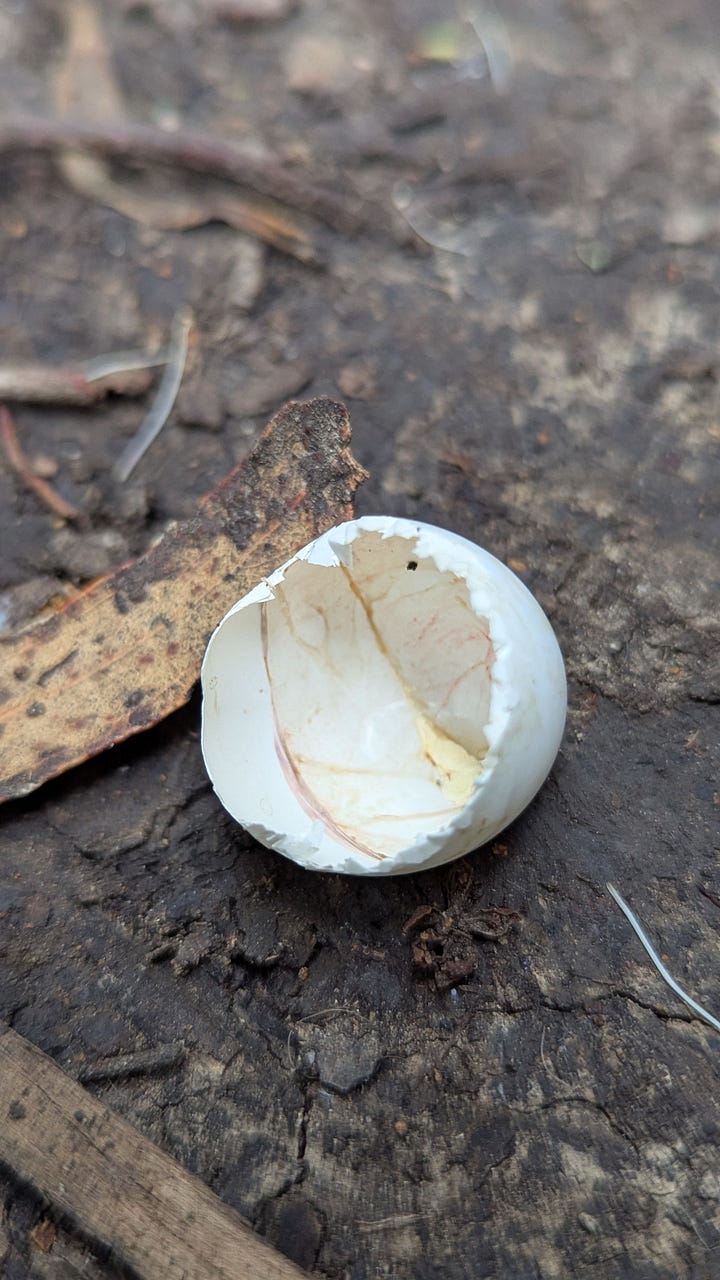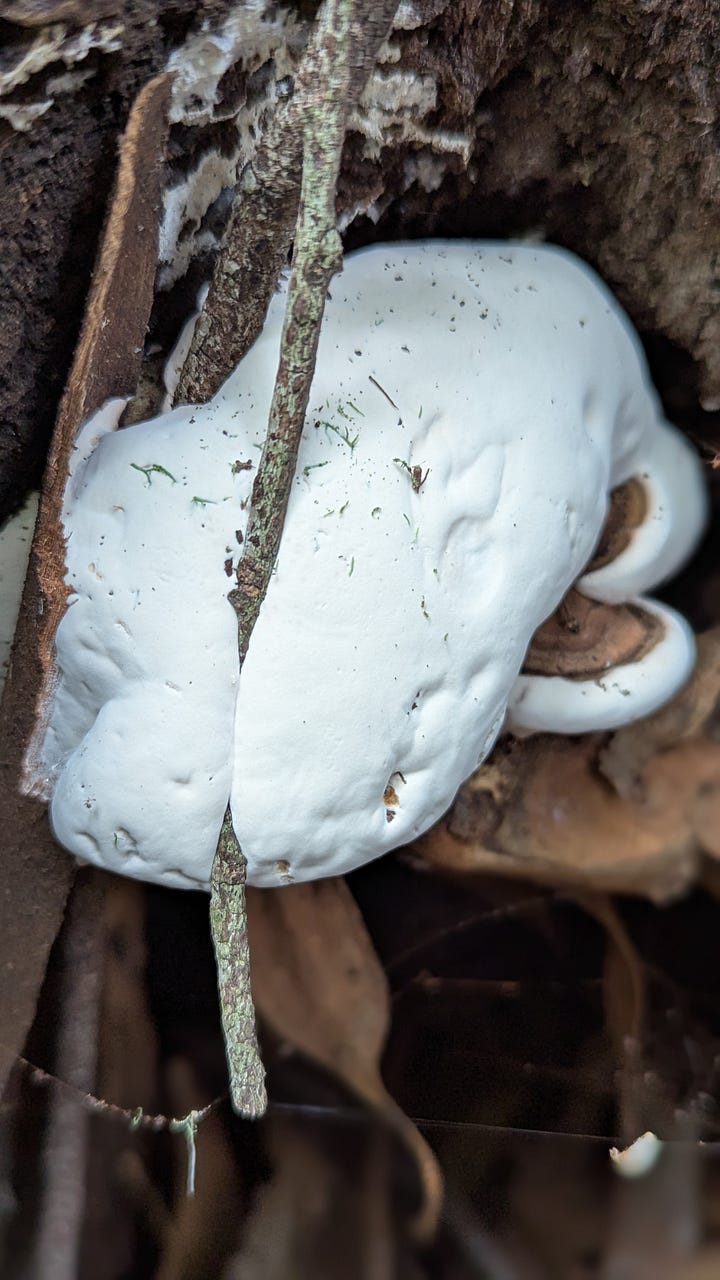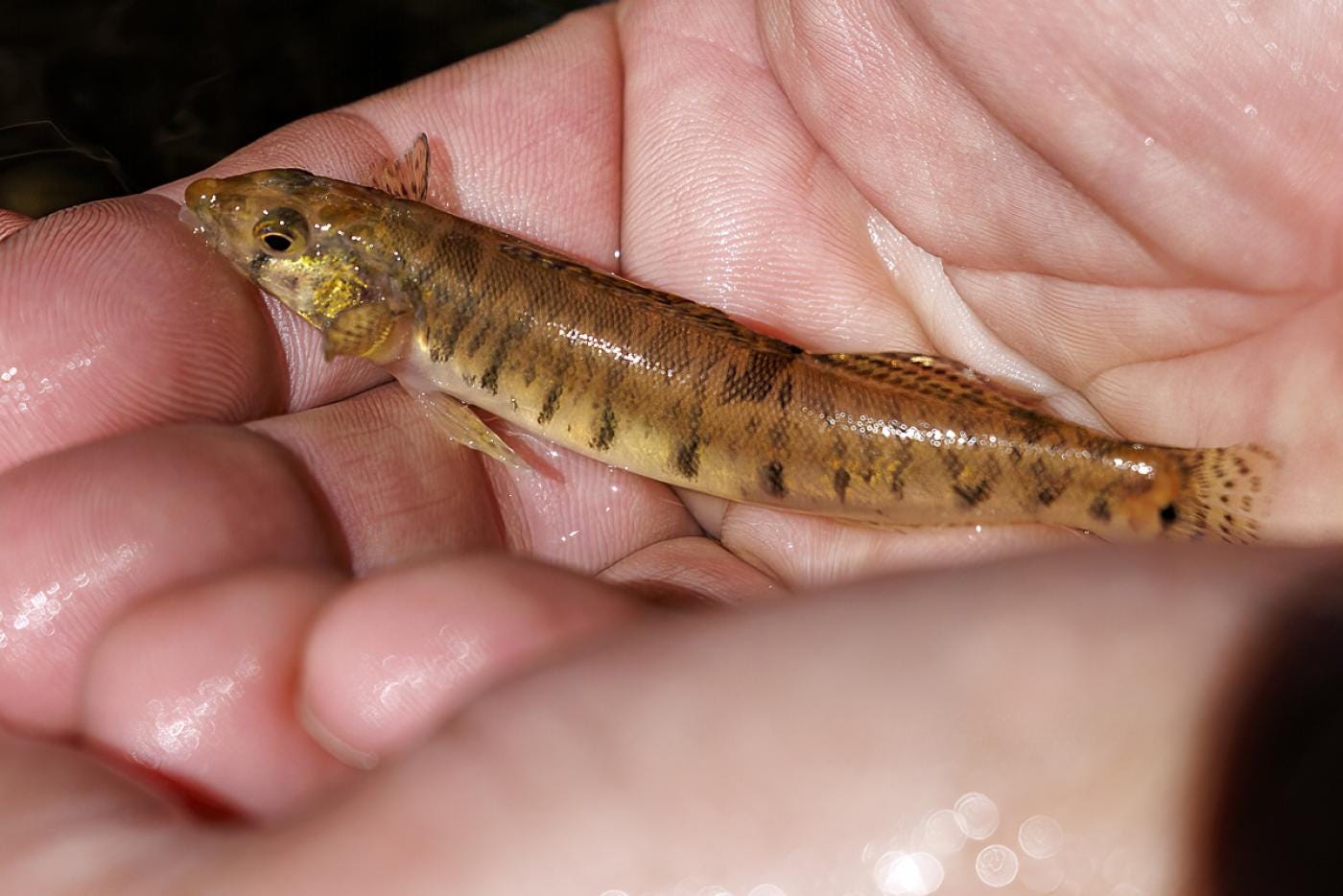Lost salmon turn wild in restored stream
Plus, hopeful headlines on renewable energy, frogs, sea lions, fish, big trees and rivers from around the globe.

Salmon are “rewilding” themselves in a restored creek in Northern California, a new study shows.
A couple of decades ago, Putah Creek was dried out and full of trash, a victim of dammed water upstream. Salmon were nonexistent. Now, thanks to extensive restoration and mandated water flows, the creek is home to yearly salmon runs. Previous studies showed that these salmon were lost hatchery fish. Now, researchers at the University of California, Davis, have confirmed for the first time that some salmon that spawned in the creek in 2024 were born there.
“The fact that you have Putah Creek-origin fish is a big deal,” said senior author Andrew Rypel, director of the UC Davis Center for Watershed Sciences at the time of the study. “To have a growing, stable population that’s natal means it’s a well-managed ecosystem. It means we’re taking care of the water and the land the right way, and that there’s a future for fish in that place. It also shows there’s hope for other streams that are degraded.”
Though dams are coming down in Northern California, much of the historic spawning ground for chinook (king) and steelhead is still off limits. Low numbers have caused the state’s struggling chinook salmon fishery to be cancelled for three years in a row.
As a band-aid, about 28 million hatchery-raised fish are trucked throughout the state and released downstream of dams each year, but these fish lack crucial reference points and often don’t return anywhere near where they were released.
High Country News reported in 2023 that hatchery fish are getting lost:
These trucked hatchery fish may survive longer in the short term, but they will return to the river system years later with massive gaps in their memory and little sense of how to locate their spawning grounds. Instead, many end up wandering up unfamiliar rivers or streams and spawning far from home.
Scientists are divided on whether Putah Creek historically maintained year-round flows that supported salmon. The river sometimes dried out completely even before the Monticello Dam was built upstream to create Lake Berryessa in 1957. So, restoring Putah Creek and establishing healthy, year-round water flows may have established brand new salmon habitat in the state.
If we build it, they will come.
I’ve written about Putah Creek here:
Hopeful Headlines
Turkey: Thirty million saplings and 50 years later
This image has been making the rounds again on social media. It depicts Hikmet Kaya, a retired Turkish forest chief, posing with a photo of the degraded hillside he turned into a forest. Over his career, starting in 1978, he planted 30 million saplings. Photo credit unknown. His story was featured on news sites in 2022, including Fix The News and My Modern Met.
Patience, anyone?
Global: Renewable energy is not slowing down
The most under-reported news on the planet is the rapid deployment of renewable energy.
URUGUAY:
at Net Zero Notes writes in “Winds of Change in Uruguay” that the country deployed renewables like solar and wind at such a pace that it cut its “reliance on imported oil for electricity from 50% in 2008 to only 9% today.”EUROPE: Writer
at Climate Hopium reports that “The European Union announces 100 billion climate and clean energy investment while globally oil use falls — for the first time ever — in the overall energy mix.”CALIFORNIA: Electricity generation from natural gas dropped by 25 percent in 2024, compared to the year before, according to Stanford University’s Mark Jacobson, as interviewed by PV Magazine.
According to the study, the growth of solar, wind, and battery storage, in particular, resulted in fossil gas use dropping 40% during the 116-day period and 25% during the entire year of 2024 relative to 2023. “This also debunks the myth that gas must increase when renewables increase on the grid,” Jacobson noted.
California is the world’s fifth largest economy. This dramatic drop in natural gas usage must have the fossil fuel industry in a complete panic!

PAKISTAN: Farmers are abandoning expensive diesel for cheap solar to pump their irrigation wells. As a result, diesel use dropped 35 percent in Pakistan last year, according to Bill McKibben.
UNITED STATES, no one is doing more for the clean energy fight than
. Mark your calendar for “Sun Day” this September 20, and visit SunDay.earth to learn more about how to participate in a global day of spreading the word about solar power, which is now the cheapest energy on the planet.AFRICA: The World Bank is funding solar mini-grid technology in several countries in Africa, including Nigeria, Madagascar and 1,000 villages in Zambia.
CHINA: Finally,
’s “The Weekly Anthropocene” includes renewable energy updates from around the globe. In January and February of this year, solar accounted for 75 percent of the energy China added to its grid. Don’t miss the photo of the floating solar farm!Tanzania: Marine reserves offer long-term benefits to communities
The Tanzanian government established five marine protected areas (MPAs) in the 1990s to safeguard falling fish populations. Over nearly 20 years, villages near these protected areas became less dependent on fishing and agriculture and saw their standard of living rise faster than communities farther away, a new study shows.
Massive, long-lived trees discovered in the Tanzanian rainforest are a new species
A team of botanists has discovered a new tree species in a national park in Tanzania, a giant they have named Tessmannia princeps. Some of the trees could be 3,000 years old.
The researchers note that there are many scarce species of plants and animals found only in the Udzungwa Mountains and Udzungwa's Mngeta Valley. Because of that, the entire area has been designated a national park, which means trees cannot be cut down or harmed. That is good news for Tessmannia princeps, the team notes, because its slow-growing nature and low numbers mean it could very well disappear if disturbed by human activities.
Chile: Frog thought extinct resurfaces after 120-year absence
The Daily Galaxy reports:
A rare amphibian once thought to be extinct has resurfaced in Chile, marking a remarkable scientific breakthrough. Alsodes vittatus, a small frog known only from old records and a single specimen, has been rediscovered after over 120 years in the wild. This rediscovery is being hailed as one of the most exciting amphibian finds in South America this decade.
Frogs from Chile, take two: A Lifeboat to London for Darwin’s Frogs
Darwin’s frogs, which are unique for incubating their young in their vocal sacks, are dying rapidly of chytrid fungus. Frog species can be saved from this fungus with a lot of hard work from zoos and others, as I wrote in “The ecologist who dared love Yosemite’s frogs.”
The New York Times reports:
In October, with the species on the brink of extinction, the London Zoo organized a rescue mission and established a captive breeding program to help save the frog from being wiped out. “There’s nothing quite like Darwin’s frogs,” Dr. Tapley said. “Their evolutionary distinctiveness is really, really striking.”
Uruguay: Protecting sea lions at Isla de Lobos
Thanks to reader
for pointing out this story from 2023 as a note to my recent post “Hopeful headlines: Seals, night parrots, beavers … !”Uruguay took the first steps toward the ambitious goal of protecting at least 30% of its waters by 2030 by establishing the country's newest marine protected area (MPA) around Isla de Lobos, home to the largest colony of sea lions in South America.
North Carolina: An endangered fish makes a comeback
The Roanoke logperch, or “King of the Darters” is only found in North Carolina and Virginia. The species has been listed as federally endangered since 1989. Reintroductions into several streams and rivers in North Carolina have been successful at establishing new populations, PBS reported.
The fish are unique because of how they find their food, according to the Virginia Department of Wildlife Resources:
[Biologist Mike] Pinder noted that the logperch group of fish “have a characteristic elongated snout, which is suited to the behavior that you just don’t see in other fish. Most fish, like trout, will just hang around, waiting for food to just float down to them. But logperch take a more active role—they flip rocks with their snout looking for little aquatic insects that live underneath—the mayflies, caddisflies, and stoneflies. So prolific is their quest for a meal, you’ll see some of these older logperch with a white callus on their snout due to all the rock flipping.”
In Virginia, stream restoration by the wildlife department is helping to boost populations.

Utah: A park ranger took action 25 years ago. Now, 85 miles of the Escalante River have been saved
Retired park ranger Bill Wolverton recruited volunteers to help him remove invasive Russian olive trees from 85 miles of river so that native species and animals have room to thrive. Unfortunately, a funding freeze from the current administration has suspended the work.
National Public Radio reports:
WOLVERTON: I couldn't stand the thought of seeing this river completely overwhelmed by such a horrible weed. I just had to get rid of it for the sake of a really special place.
“We all have in our ancestral blood that knowledge of what it was like to live on a healthy planet.”
— Amy Cordalis, former general counsel for the Yurok Tribe, leader of the successful fight to tear down four dams along the Klamath River.
About Earth Hope:
Earth Hope is a solutions-based journalism project that highlights environmental success stories from around the globe, because hope is the foundation of progress. I’m Amanda Royal, a former newspaper reporter and current eco-news junkie. Read more about this project and what inspired it.
Visit earthhope.substack.com for more stories. Visit my Services page if you’re a writer who’d like some help figuring out Substack.














Bless you and this precious planet... I love the planet to love myself!
Thank you. I really needed this today!